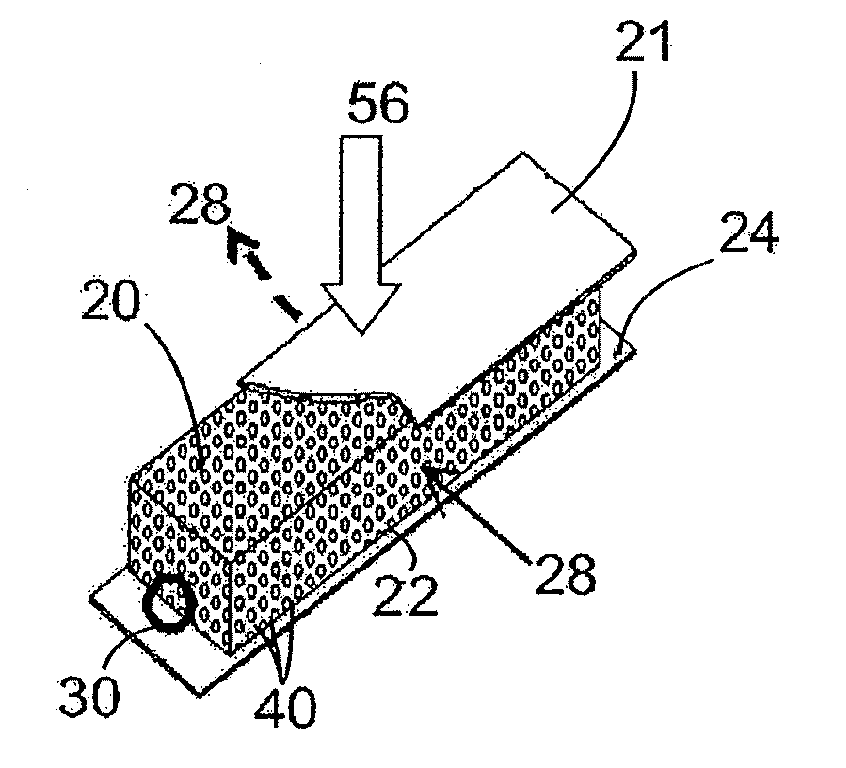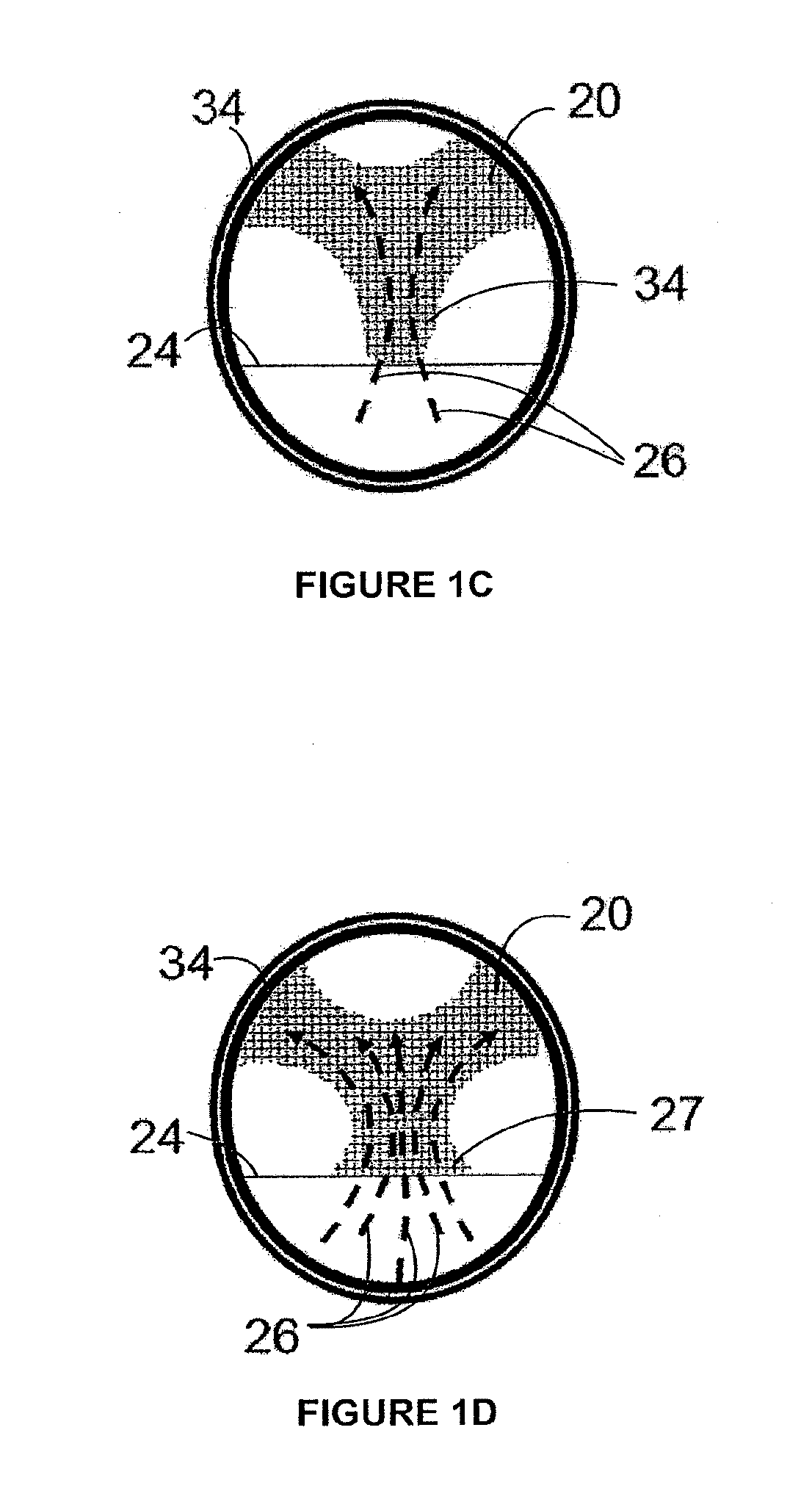Heat transfer assembly and methods therefor
a technology of heat transfer and assembly, which is applied in the direction of heat transfer modification, indirect heat exchangers, lighting and heating apparatus, etc., can solve the problems of heat removal, excess processing stress and overall assembly complexity and cost, and limit the design of thermal transfer devices to materials with similar tec, etc., to achieve good conductive exchange, high convective exchange, and high thermal stress tolerance
- Summary
- Abstract
- Description
- Claims
- Application Information
AI Technical Summary
Benefits of technology
Problems solved by technology
Method used
Image
Examples
example i
[0091]A first embodiment will be described by reference to the drawings. In this embodiment the heat transfer assembly as referenced in FIG. 1 comprises at lease one segmented, formed or simple block of graphite based foam 20 in thermal contact with the heat exchange surface 24 through direct compression of GF material 20 to said surface 24 creating an acceptable thermal junction 22 with a low and mostly temperature independent thermal contact impedance. During normal operations the heat in block is dissipated through convection by directing a fluid coolant 56 through the block 20 relative to the heat flow 58 at the surface, as seen in FIG. 1c.
[0092]FIG. 2a illustrates an embodiment seen as a preassembled unit 23, having an element bottom contact surface 21 which can be modified by the addition of a volumetric recess for conformal connection to the heat exchange surface 24 topography. Here the foam element is operably secured to enable compression force 63 by means of an exemplary ...
example ii
[0093]A second embodiment of the invention will be described by reference to the drawings, and the structure of a thermal heat exchange assembly according to this embodiment will be described in terms of manufacturing steps.
[0094]FIG. 3 shows an embodiment which may include several GF elements 20 being coplanarly located in one or more axial directions sequentially forming a multielement layer 62. Said element layer 62 can be connected by separate 64 or common mechanical attachment mechanisms 66, wherein the GF material layer 62 is sandwiched between the heat exchange surface 24 and the attachment mechanism 60. Any or all of the elements, surfaces and mechanisms may 67 or may not 65 have a volumetric recess for conformal connection of the parts through geometrical or alignment topography.
[0095]With reference to FIG. 3, a heat exchanger GF element assembly may have varying densities of GF 20 in order to match varying heat dissipation requirements on the surface of the module. Additio...
example iii
[0096]Further embodiments of the present invention are illustrated in FIGS. 4 and 5 which explain a third embodiment of the invention is described as a stacked multilayer heat exchange assembly formed by alternating foam element layers and barrier layers which are effectively sandwiched between the heat exchange surface and the attachment mechanism.
[0097]This embodiment can exhibit several possible variations in relative size and geometry. The basic heat exchange mechanism of this element is identical with that of the first embodiment. This plurality of array elements must be stacked as to ensure proper compression on all layers, therefore the layout can contain alignment marks or features to simplify assembly and integration of the same.
[0098]FIG. 4a illustrates an exemplary stack 70 anchored to a base 72 whereby all the barrier layers 73 are also exchange surfaces 74, composed of flat tubes 75, only serve as a separating boundary for each element layer 20 and a separate mechanical...
PUM
| Property | Measurement | Unit |
|---|---|---|
| Length | aaaaa | aaaaa |
| Thermal conductivity | aaaaa | aaaaa |
| Thermal conductivity | aaaaa | aaaaa |
Abstract
Description
Claims
Application Information
 Login to View More
Login to View More - R&D
- Intellectual Property
- Life Sciences
- Materials
- Tech Scout
- Unparalleled Data Quality
- Higher Quality Content
- 60% Fewer Hallucinations
Browse by: Latest US Patents, China's latest patents, Technical Efficacy Thesaurus, Application Domain, Technology Topic, Popular Technical Reports.
© 2025 PatSnap. All rights reserved.Legal|Privacy policy|Modern Slavery Act Transparency Statement|Sitemap|About US| Contact US: help@patsnap.com



